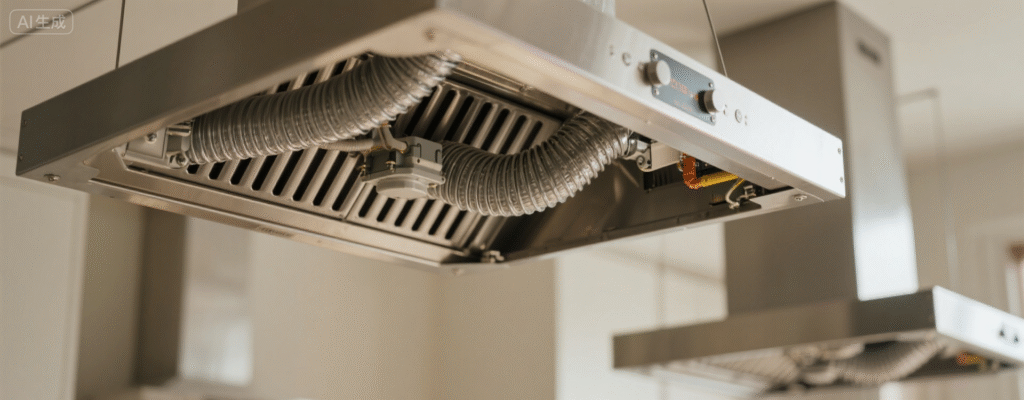For homeowners and renters seeking a practical kitchen ventilation solution, the ductless kitchen exhaust hood offers a compelling alternative to traditional ducted models. These systems are designed to filter and recirculate air directly back into the kitchen, eliminating the need for complex ductwork. This article explores the core technology behind these hoods and provides a clear guide to their maintenance, empowering you to make an informed decision for your culinary space.
The Mechanics of Recirculating Air Filtration
Unlike ducted hoods that expel air outside, a ductless kitchen exhaust hood operates on a principle of internal purification. As smoke, steam, and cooking odors are drawn into the hood, they pass through one or more filters that trap grease and neutralize smells. The core of this system typically involves a two-stage filtration process. The first line of defense is a metal grease filter, usually made of aluminum or stainless-steel baffles, which captures the bulk of the grease and particulate matter.
The second, and most crucial stage for odor removal, is the charcoal or carbon filter. These filters contain activated carbon, a material with a vast surface area that adsorbs odor-causing molecules and vapors from the air. The effectiveness of this technology is well-documented; a 2021 study published in the Journal of Environmental Chemical Engineering confirmed the high adsorption capacity of activated carbon for volatile organic compounds (VOCs), which are common in cooking fumes. It is this combination of mechanical and chemical filtration that allows a modern ductless exhaust hood to effectively clean your kitchen air.
Maintenance: The Key to Sustained Performance
The efficiency of a ductless system is entirely dependent on the condition of its filters. Neglecting maintenance will quickly lead to a noticeable decline in performance, resulting in lingering odors and a greasy film on kitchen surfaces. Establishing a consistent cleaning and replacement schedule is non-negotiable.
- Grease Filters: These should be cleaned every two to four weeks, depending on your cooking frequency. Most are dishwasher-safe, but always refer to the manufacturer’s instructions.
- Charcoal Filters: Unlike metal filters, charcoal filters cannot be cleaned and must be replaced. The standard recommendation is to change them every three to six months, a guideline supported by major appliance manufacturers like Whirlpool and Bosch in their 2023 product care manuals. A heavily used filter will become saturated and lose its adsorbent properties.
By adhering to this regimen, you ensure that your recirculating range hood continues to operate at peak efficiency, protecting your indoor air quality and your kitchen from grease buildup.
In summary, ductless kitchen exhaust hoods provide a viable and effective ventilation solution where ducting is impractical. Their operation hinges on a dual-filtration system that physically traps grease and chemically neutralizes odors through activated carbon. However, their long-term success is directly tied to a disciplined maintenance routine of cleaning metal filters and regularly replacing charcoal ones. For those in apartments or homes without existing ductwork, understanding and committing to this upkeep makes a ductless hood a smart and functional choice for a cleaner kitchen environment.
